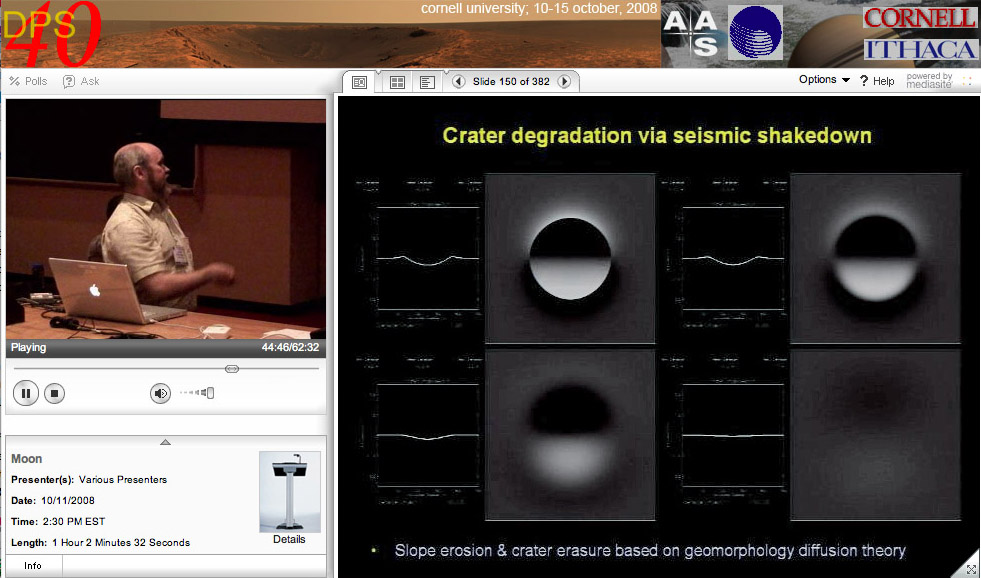March 9, 2018
Moon Science for All
Originally published October 12, 2008

image from DPS Lunar Sessionstreaming video
The professional and amateur lunar communities often have little overlap (although some amateurs now do professional level work). The promise of internet technology now makes it possible for anyone interested in the Moon to see in real time (and later) what professionals are saying about the Moon. The screen capture above is from the Saturday (yesterday) web streaming of the lunar talks from the Division of Planetary Science Conference ongoing in Ithaca, NY. The entire program is being streamed so you can watch the latest results about Mars, Mercury, Titan, comets, etc. The image here is from a talk by Jim Richardson concerning the distribution over time of lunar craters across the surface. Most past studies were done simply mathematically, but Richardson creates computer drawn images so the buildup of craters on top of craters can be visually appreciated. His study also models the effects of seismic shaking (from subsequent impacts) in smoothing out and reducing the topography of craters. The DPS is not the place where most lunar science is presented so there are only a few dozen papers available for viewing. It would be wonderful if the main meeting for lunar science - the Lunar and Planetary Science Conference every March in Houston - streamed talks too. That would even help attendees who often want to attend two talks simultaneously!
Chuck Wood
Yesterday's LPOD: A & A
Tomorrow's LPOD: Beyond Red
COMMENTS?
Register, Log in, and join in the comments.



